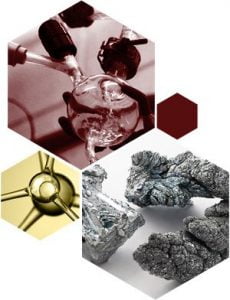
Yttrium (III) 2,2,6,6-tetramethyl-3,5-heptanedionate
Properties
- We can offer items in bulk or custom. For other quantities or purities, please request a quotation.
- All prices are subject to change.
Information about Yttrium (III) 2,2,6,6-tetramethyl-3,5-heptanedionate / CAS 15632-39-0
Yttrium (III) 2,2,6,6-tetramethyl-3,5-heptanedionate (Y(C11H19O2)3), commonly referred to as Yttrium (III) TMHD or Y(THD)₃, is a volatile and moderately thermally stable metal organic compound. It serves as a key precursor in thin-film deposition techniques, primarily Atomic Layer Deposition (ALD) and Chemical Vapor Deposition (CVD), to produce high-purity Yttrium Oxide (Y₂O₃) thin films. These coatings are widely used in optics, electronics, and protective applications, where thermal stability, optical transparency, and high dielectric strength are essential. The volatility and controlled decomposition of Y(THD)₃ ensure precise deposition, making it a preferred precursor in semiconductor fabrication and advanced coatings.
In addition to thin-film applications, Yttrium (III) TMHD has been investigated for its role in the synthesis of high-temperature superconducting materials. Researchers have explored its use in Metal-Organic Chemical Vapor Deposition (MOCVD) to fabricate yttrium-based superconducting films, often in combination with other precursors, for potential applications in power transmission and medical imaging technologies.
The microelectronics industry has explored Y₂O₃ films deposited from Yttrium (III) TMHD as gate dielectrics and protective coatings for semiconductor components. Y₂O₃ exhibits a high bandgap and excellent insulating properties, making it essential for next-generation transistors, capacitors, and memory devices. Researchers have also explored its integration into high-k dielectric materials to enhance the performance of microelectronic circuits.
In the optics and photonics sector, Ytrium Oxide thin films enhance light transmission and durability in infrared optical devices, laser systems, and display technologies. The material is particularly valuable in high-power laser optics, where it improves resistance to thermal and mechanical stress. Yttrium (III) 2,2,6,6-tetramethyl-3,5-heptanedionate is also investigated for phosphor synthesis, which contributes to energy-efficient lighting solutions. Electroluminescent Y₂O₃ films derived from Y(THD)₃ have been studied for their applications in high-performance display technologies, including organic light-emitting diodes (OLEDs) and field-emission displays.
- Zhang, T., Hongwei, G., Fazhu, D. I. N. G., Fei, Q. U., & Shaotao, D. A. I. (2012). Synthesis, characterization and thermostability of tris (2, 2, 6, 6-tetramethyl-3, 5-heptanedionato) yttrium (III). Journal of Rare Earths, 30(10), 1041-1047.
- Zelenina, L. N., & Chusova, T. P. (2021). Tensimetric Study of the Tris (2, 2, 6, 6-tetramethylheptan-3, 5-dionato) yttrium (III) Dissociation in a Gas Phase. Russian Journal of General Chemistry, 91, 1984-1989.
Safety
- H302+H312+H332 Harmful if swallowed, in contact with skin, or by inhalation.
- H315 Causes skin irritation.
- H319 Causes serious eye irritation.
- H335 May cause respiratory irritation.
- P261 Avoid breathing dust/fume/gas/mist/vapours/spray.
- P264 Wash skin thoroughly after handling.
- P270 Do not eat, drink or smoke when using this product.
- P271 Use only outdoors or in a well-ventilated area.
- P280 Wear protective gloves/protective clothing/eye protection/face protection.
- P301+P312 IF SWALLOWED: call a POISON CENTER or doctor/physician IF you feel unwell.
- P302+P352 IF ON SKIN: wash with plenty of soap and water.
- P304+P340 IF INHALED: Remove victim to fresh air and Keep at rest in a position comfortable for breathing.
- P305+P351+P338 IF IN EYES: Rinse cautiously with water for several minutes. Remove contact lenses, if present and easy to do. Continue rinsing.
- P362 Take off contaminated clothing and wash before reuse.
- P403+P233 Store in a well-ventilated place. Keep container tightly closed.
- P501 Dispose of contents/container to.....



